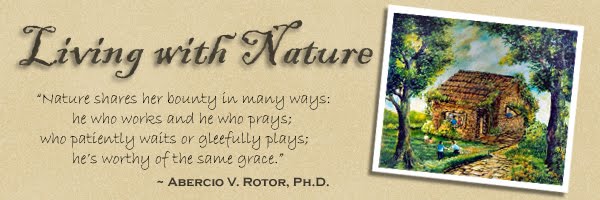Art Evolution
Rocks for Study, Art and Hobby
Specimens and Art Works on display
at the Living with Nature Center
San Vicente, Ilocos Sur
"Geologists have a saying - rocks remember. - Neil Armstrong
Dr Abe V Rotor
Left: Mt Pinatubo's pyroclastic rock mounted for the museum.
The rock formed while still very hot, forming a porous texture.
Right: Floral arrangement of stones gathered from Bacnotan,
La Union beach.
Left: Rock collection of a student attracted by the diversity of the specimens.
Right: This is not a fossil, but broken glazed jar often used to store sacred
objects and remains, like an urn in earlier times.
Brain coral in its early stage of fossilization. Operculum of a large seashell undergoing erosion by the elements. Note the counterclockwise spiral, a unique find.
Left: Limestone undergoing metamorphism into marble which
may take a very long time under favorable conditions. Right:
Shades of opal and glitter often make this petrified wood look
valuable when cut and polished, and made into fancy jewelry.
A nearly perfect round stone shaped naturally by running stream
used as cannon ball in the days of Panday Pira (c. 1488–1576)
a Filipino blacksmith and maker of an early type of cannon.
Fossilized bone fragment of a large animal in the Cretaceous era.
*The Cretaceous is defined as the period between 145.5 and 65.5 million years ago, the last
period of the Mesozoic Era, following the Jurassic and ending with the extinction of the dinosaurs
Probable tusk of an elephant (?) reportedly found in Cagayan Valley,
a subject of study on animal migration and land bridges in ancient past.



























No comments:
Post a Comment